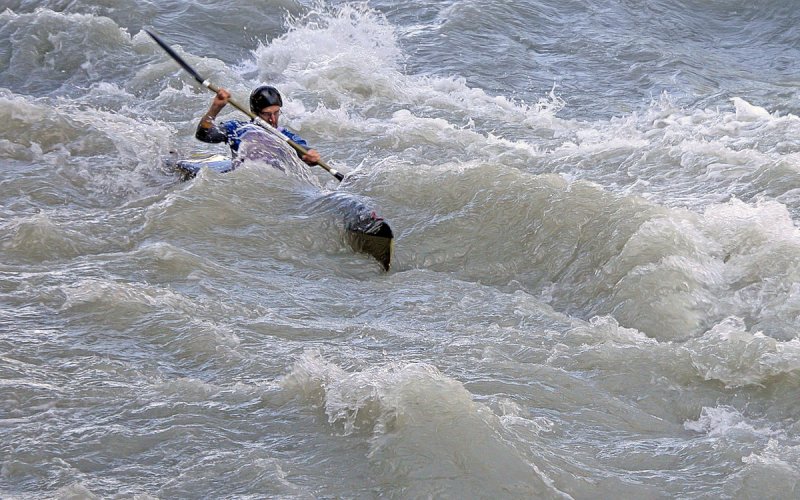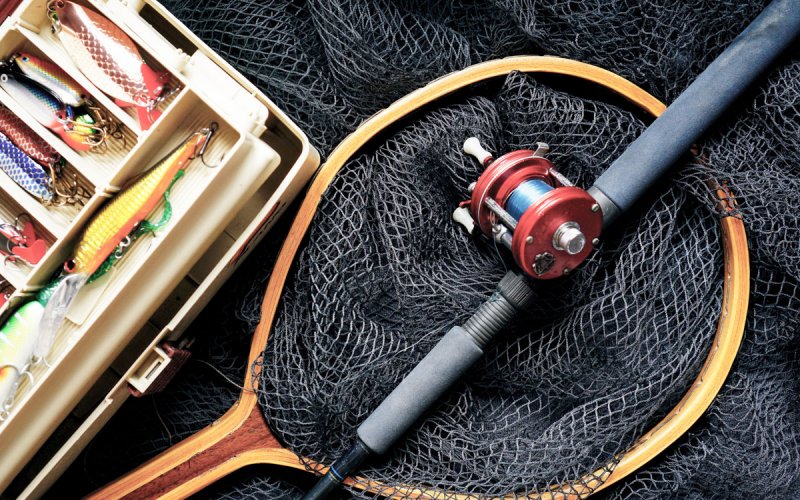Dos and Don'ts of Kayak Fishing
Here are useful tips, safety instructions, information on how to become a better packer for day and multi-day trips, and ways to become a more efficient and skilled kayak angler.
By: Guest Contributor | Aug 2020
 Kayaker fishing over calm waters
photo by Jols
Kayaker fishing over calm waters
photo by Jols
Whether you’re new to the sport and just getting started or an avid angler, the last thing you want to do is get on the water without being prepared for the worst.
These basic tips as to what you should and shouldn't do are an absolute "must know" while kayak fishing. Some of these come from personal experiences on the water, and others from simply using common sense.
Wear A Life Jacket
The easiest and most vital piece of safety equipment is a life jacket, to which there's no reason not to wear one when you’re paddling. Even if you’re a good swimmer, a personal flotation device or PFD will keep you afloat if you’re tired, hurt, or hypothermia sets in. You should not leave your life vest/jacket in your kayak − you must wear it! It may be a little uncomfortable and hot on warm summer days, but the risk/reward payoff is tremendous.
There are several different designs and styles of life jackets depending on the activity. For kayak fishing, you should probably choose a Type III.
Choose the Right Kayak
Kayak fishing is growing in popularity, and right now there’s a wide range of angling boats on the market. Their make, reliability, and stability can differ from one boat to another boat and from one company to another company. Don’t run out and buy the first boat you see. Instead, make sure that it will be able to safely handle the water conditions and the types of fish you’re after.
Unless your ambitions are limited to the occasional weekend paddle on a calm lake, this is not the time to scrimp. Cheaper plastic or inflatable kayaks marketed as “fishing kayaks” should not be taken onto the ocean or any challenging or dynamic waterway. If possible, take your prospective kayak or a similar one out for a test drive before you buy it.
Know Your Skill Level
Kayaks are a lot of fun and a great platform to fish from when properly outfitted, but there is a learning curve to them, particularly if you’re heading into rough or unpredictable waters. Don’t overestimate your skill level. When in doubt, don’t go out. Should rough weather come up, kayaks are not fast enough to get you out of danger quickly. Anticipate changing conditions and always keep an eye on the weather.
If you're new to the sport, it may be a good idea to take a class before heading out. You’ll pick up valuable information that will make you better prepared and a better paddler. If you are a competent enough paddler to take on more challenging conditions, it’s still best to always paddle with a friend who can assist you if something goes wrong.
Prepare for the Worst
Prepare a dry bag with all your necessary safety equipment. Depending on the length of your trip, the safety accessories you need may vary. As a baseline, you should always take some sort of signaling device, reserve food and water, a reflective mirror, and a reserve set of dry clothes.
Tell someone where you’re going and when to expect you back. Once you file this “float plan” don’t deviate from it or else search and rescue crews won’t know where to look for you.
Know the Right-of-Way
As a non-motorized vessel, kayakers and sailboats under sail have the right-of-way when they encounter personal motorized vessels. These are the majority of the boats you encounter and this means that they should defer to your direction and navigate around you. While this is true on paper, not all boaters respect these rules and you should always be aware of boat traffic.
Remember that as a kayaker you have a low profile on the water and as such are easy to miss. When in doubt, get out of the way. You should also be aware that kayaks must defer to commercial fishing boats with gear in the water, tugs with toes, emergency craft, large commercial vessels, and ferries.
Dress for the Water Temperature
It can be tempting to dress in minimal clothing on a hot, sunny day. But even warm water paddling can get cold after a while and for those in temperate or colder climates, splashing water can turn even hot summer days chilly. Always wear clothing that will protect you from the temperature of the water, not the temperature of the air.
Check the Weather Forecast
Always have the most up-to-date weather forecast prior to departing. Bigger bodies of water often have their own specific marine forecast that will give more detailed information on wind speed, direction, and wave height.
Understand the relationship between wind, tides, and waves. Wind can make any body of water dangerous, take extra precaution if the forecast calls for wind speeds greater than ten knots.
Use Sun Protection
The power of Ultraviolet (UV) rays are magnified when they reflect off the water and can cause sunburns to occur quicker and more severely. Rarely will you have any shade or other natural elements that will protect you from direct sunlight.
Take proper precautions to protect your skin by applying the proper sunscreen (SPF 50 or higher if you’re not used to high-intensity exposure), wear a hat, sunglasses, and shirt with long sleeves. Take plenty of water to ensure that you stay properly hydrated.
Pack Light & Stay Organized
This may mean different things depending on how long you plan on being out. Your kayak’s storage space is a valuable commodity. If you pack smart, you can fit much into a tiny space. Use several small bags instead of a couple of large bags as these will back better in watertight hatches.
When possible, keep all your gear in waterproof bags to avoid damage. Clearly label your bags with the contents. If you’re going on an extended trip, it can be reassuring to do a “practice pack” with your boat at home so you have an idea where everything fits best.
It won’t be possible to keep all your related gear in the same bag, but if you remember what items are in which bag, you won't have to dig through multiple bags looking for the perfect lure when you're on the water. Keeping your gear organized will save you heartache down the road.
Know the Local Rules
Almost every fish species has some sort of regulation that anglers must adhere to. Make sure you understand these rules and the terminology (catch limit, size, “in the field,” “in possession,” etc) before going out. Ignorance is no excuse for breaking the law. Never assume that you can fish whatever you want and always carry your license with you.
About Guillaume Bonastre, Contributing Author
Guillaume is the co-founder of "Happiness Without." He and his wife live near Glacier Bay National Park in a ridiculously small town that’s not even worth naming. They love everything outdoors, but more specifically, they love to go on multi-day kayaking/camping trips. For a wealth of information about kayaking visit Guillaume's blog at https://www.happinesswithout.com/















